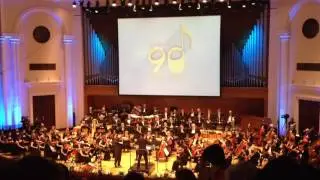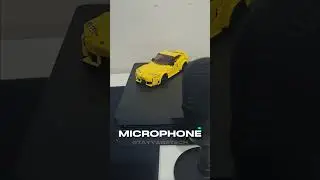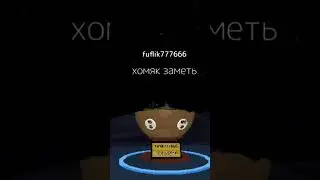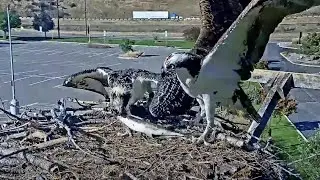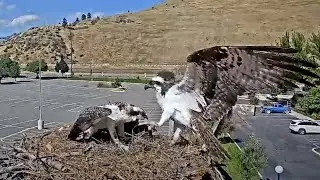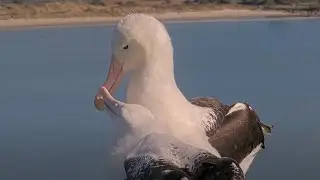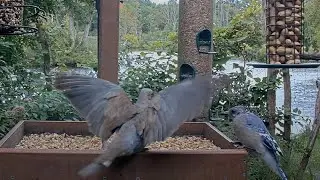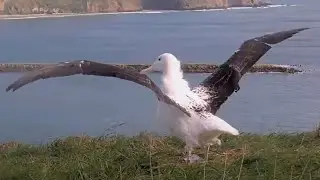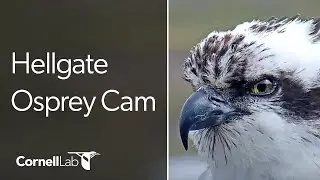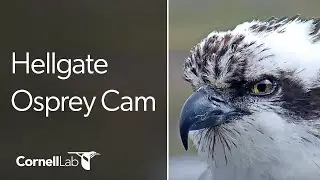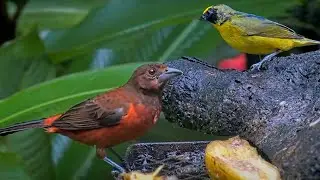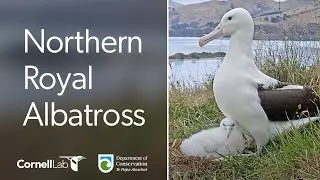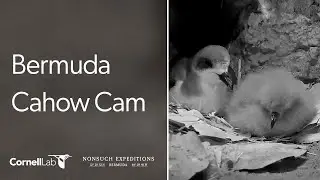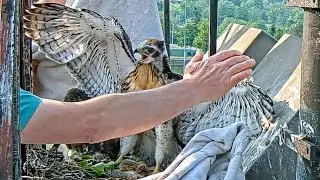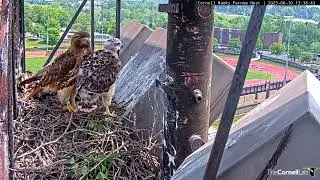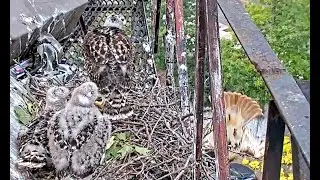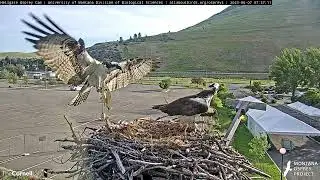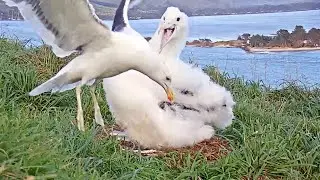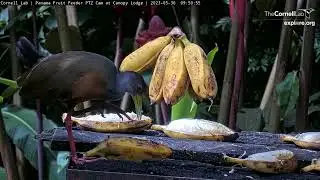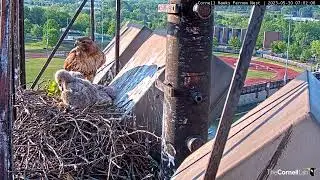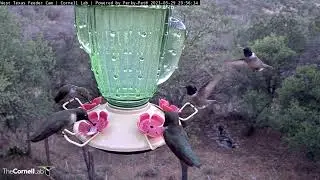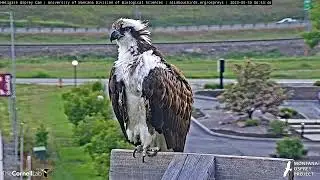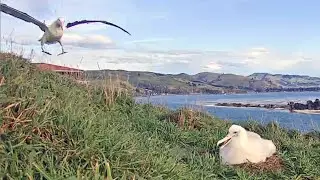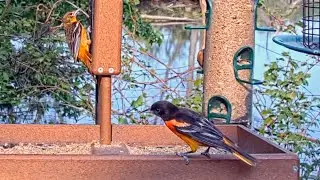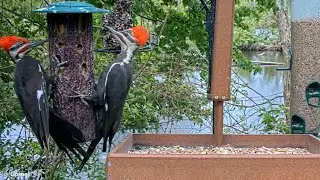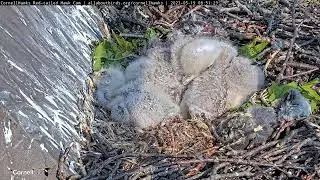Fly Larvae Infestation in Young Red-tailed Hawks' Ears = Veterinary Intervention @ the
After keen-eyed volunteers noticed an odd movement in the ear of M1 on June 8, veterinarians from the Janet L. Swanson Wildlife Hospital examined the footage and identified the cause as fly larvae in the ear. They noted swelling and that the chick was keeping its third eyelid over its eye, which is a sign of pain. If left untreated, the infection was expected to worsen. M2 also appeared to be exhibiting the same condition. We worked as quickly as possible to arrange a lift to enable a veterinarian to perform an examination of the nestlings and treatment as needed. The exam took place on Sunday, June 11.
That day, Dr. Rolfe Radcliffe from Cornell University’s College of Veterinary Medicine went up in a lift to the nest site with staff from Bird Cams and Cornell Facilities. A brief inspection confirmed that all three young had larvae in their ears.
The young were brought to the Wildlife Hospital where veterinarians noted mild tissue damage and inflammation. Veterinarians removed nearly 50 larvae, cleaned the young hawks’ ears, and provided the young hawks with fluids, antibiotics, and antiparasitic medication. Because the young were still in good health other than mild tissue damage, the prognosis is good.
Big Red, waiting on a nearby building, dove at the team while they returned the nestlings, a behavior that birds use in response to predators at their nest. She then perched on a nearby light tower to oversee the return of the chicks to the nest, and was soon joined by Arthur. Soon after the team descended from the nest, Big Red returned and began feeding the nestlings a chipmunk that Arthur had delivered while they had been away.
The Bird Cams team would like to give a heartfelt thanks to Dr. Radcliffe and Dr. Sara Childs-Sanford at the Janet L. Swanson Wildlife Hospital for their guidance and expert care. The keen observations of hawk cam volunteers “babynurse1” and “keys” raised awareness of the nestlings’ situation, and they were instrumental in collecting valuable video footage of the infestations during late-night cam operations. As always, Rich Barrows, Brian Becker, and Cornell Facilities were excellent partners in efficiently and skillfully getting us to and from the nest. Finally, thanks to the cams community for sharing their observations as well, and to the cam volunteer corps for providing great feedback and engagement with the community during and after the intervention.
00:00 - 01:06 Hawk nestlings removal from nest
01:07 - 01:31 Arthur arrives to empty nest with chipmunk
01:32 - 01:55 First nestlings are replaced in nest
01:56 - 03:13 Secondary view from ground by Karel as last nestlings replaced
03:14 - 5:04 Big Red returns to nest, begins feeding chicks
5:05 - 13:07 Interview with vet & cams crew
13:08 - 13:33 Thank you's to everyone involved
********************
Watch live at allaboutbirds.org/cornellhawks
A Red-tailed Hawk pair has been nesting above Cornell University’s athletic fields since 2012. They have made use of two different light towers for their nest sites. In 2012, 2015, and 2018–2021 they used a tower near Fernow Hall, and in 2013, 2014, and 2016, they used the tower nearest Weill Hall. We installed cameras at both of these sites to get a better look at the intimate behavior of these well-known birds as they raise their young amid the bustle of a busy campus.
#birdcams #live #hawk #birds #wildlife #nature #nowplaying #newyork



